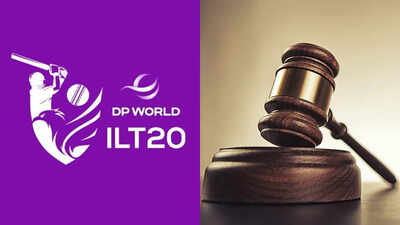With excitement building around the fourth season of the International League T20 (ILT20), all eyes are now on a major shift in the league’s approach to squad building – the introduction of a player auction. For the first time since its inception, the UAE’s marquee franchise league will hold an auction, scheduled for September, replacing the draft system used in the first three seasons.Auctions have become a signature feature of global T20 leagues, offering drama, intrigue, and promotional buzz ahead of a new season. Player prices, bidding wars, and squad strategies often capture fan and media attention – and ILT20 is now poised to enter that high-stakes space. The upcoming auction not only aims to refresh team compositions but also to reinforce the league’s ambition of becoming one of the most global cricket competitions.Go Beyond The Boundary with our YouTube channel. SUBSCRIBE NOW!But what does it take to organise such a complex event – from creating a player pool to planning logistics for a multi-national talent assembly?To understand the mechanics and ambitions behind the ILT20’s first-ever auction, TimesofIndia.com caught up with Mike Fordham, ILT20’s Head of Cricket Operations. In an exclusive interview, Fordham walked us through every detail – from Right to Match to wildcard picks and UAE player development. Excerpts:

What was the thought process behind introducing the auction format after three seasons of drafts?It was for a few reasons. Most of the players were originally signed on three-year contracts, and we’re now at the end of that cycle. So, we felt it was a good opportunity to freshen things up and try something new. We also wanted to open up more opportunities to new players. One of our aims with ILT20 is to be the most global cricket league in the world. We felt an auction was a good way to attract talent from various parts of the world and give teams a chance to reshape their squads.This year, teams were allowed to retain or directly sign up to eight players — including a mix of international and UAE players. All six teams have filled those slots. They’ll complete their squads at the auction and are also allowed to add two wildcard signings later. Some teams have already begun that process. The auction will also serve as the launchpad for Season Four, generating buzz and giving fans something to talk about. It’s scheduled for September, ahead of the league’s December 2 start.
What goes on behind the scenes to streamline the auction process, especially around building the player pool and aligning with player availability?A lot of preparation is involved, and we have a full team managing it. First, we’re launching an online registration portal for players and agents to sign up for the auction. That will remain open for about five to six weeks, leading into late August. Once that closes, we’ll finalise the player pool.Legal documents and contracts are also being prepared. Logistically, the auction will be a large event – venue selection, top-tier auctioneer, and specialised auction software are all being handled. We’re working with a leading software firm to ensure everything runs smoothly. People will travel to Dubai for the event, so all associated logistics are also being looked after. We’re confident our team will deliver.Will Right To Match (RTM) influence auction dynamics? And how do wildcard signings work?Wildcard signings occur outside the auction. Each team can sign two additional players beyond the 21-member squad at any point after the direct signing window. Some teams have started signing wildcards; others might wait closer to the season.RTM applies only to UAE players. We’ve been running a development tournament for the last two years, and this year’s edition will happen just before the auction. Each franchise has a development team – Desert Vipers, Dubai Capitals, etc. If a UAE player from a development squad enters the auction and is bid on, the original franchise will have the final right to match. This helps reinforce investment in local talent and gives development squads a tangible reward for grooming players.Will ILT20 increase the number of UAE or associate players in the playing XI?Yes, this season we’re mandating two UAE players and one associate player in the playing XI. That associate player can be from UAE or another associate nation like Namibia, Scotland, Netherlands, Nepal, or the USA.Cricket is growing rapidly, and we want to support that global expansion. Right now, cricket is a top global sport but only truly taken seriously in about a dozen countries. We want ILT20 to serve as a platform for emerging nations. Ideally, five years from now, we’d like to see more UAE and associate players in starting XIs, with overall playing standards continuing to rise.What are the unique challenges of organising an ILT20 auction compared to other leagues?The structure of auctions is generally similar across leagues, but ILT20 had some unique challenges. Until now, we didn’t have a clearly defined window due to overlapping leagues during January. This season, we’ve moved it forward – starting early December and ending early January – to reduce conflicts.While the window isn’t entirely clear, availability has improved, which should boost the talent pool. The auction should run smoothly, but the league’s uniqueness lies in its international appeal. Players enjoy coming to the UAE, especially during the holiday season. Great weather, world-class facilities, and family-friendly environments make it attractive. We’re leveraging that to build a strong product, and the auction is a vital part of that journey.
Will teams focus more on availability or squad dynamics during the auction?It’s a mix. Ideally, teams want players available for the full season. But if a world-class player is only available for part of it, they might still sign him to get off to a strong start.For example, Sharjah Warriors have signed Tim David, one of the world’s best T20 batters. He’ll play the first half before joining the Big Bash League in Australia. Teams will replace such players mid-season if needed.International commitments – like England-Australia Test series (Ashes) – also impact availability. Teams are used to managing this and franchise cricket operates with that flexibility. Players are accustomed to flying in and out on short notice.What can fans expect from the auction? Will it be live-streamed or offer new innovations?We’re working on plans to stream the auction live on our digital platforms. It should be an exciting event for fans to watch as teams finalise their squads. There will likely be surprises and new elements.The RTM for UAE players will be an interesting dynamic. Additionally, we’re introducing players from other Gulf countries, making the tournament more pan-Middle Eastern. Overall, we hope the auction provides something fresh for ILT20 and a reason for fans to stay engaged as the season build-up begins.How has ILT20 contributed to UAE’s cricket growth, particularly in player development and infrastructure?Development of local players has been a core objective. Any league, in any sport, must build a strong local base – it can’t be just about overseas stars. The UAE has long had a talented pool, partly due to its diverse population. Now, we’re seeing sustained progress.Take Aayan Khan, for example. He’s been part of Gulf Giants since Season One and has worked closely with top professionals like James Vince and Chris Jordan, under Andy Flower. That exposure is invaluable.Each franchise has a minimum of four UAE players per squad – 24 in total across the league – working with coaches like Tom Moody, James Foster, and Dwayne Bravo. That elevated their performance. The UAE’s recent win over Bangladesh in a bilateral series speaks volumes. Players like Muhammad Waseem (MI Emirates) are now winning ICC Player of the Month awards. This progress is directly linked to ILT20’s environment.


